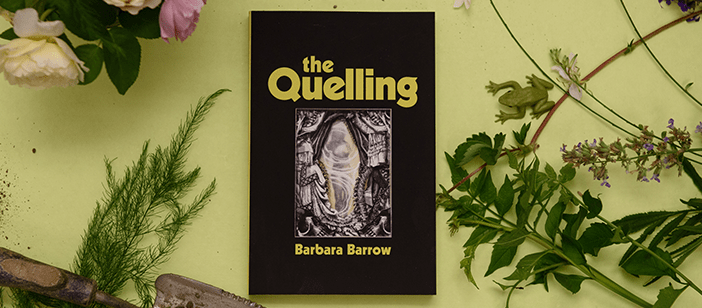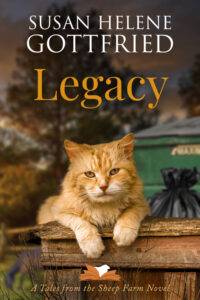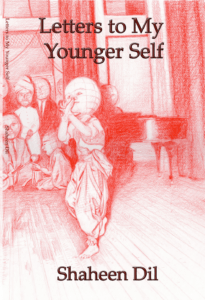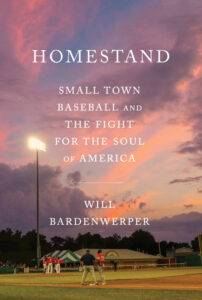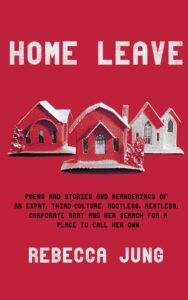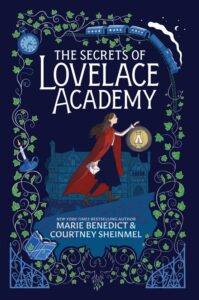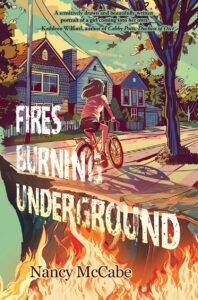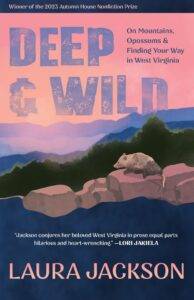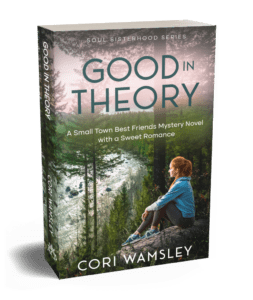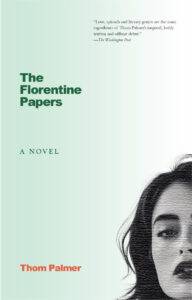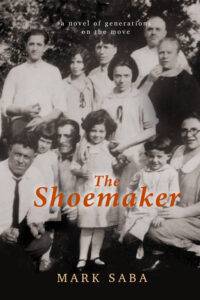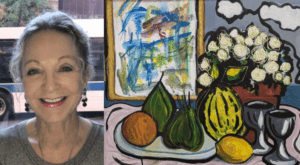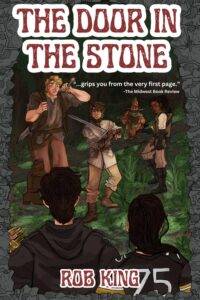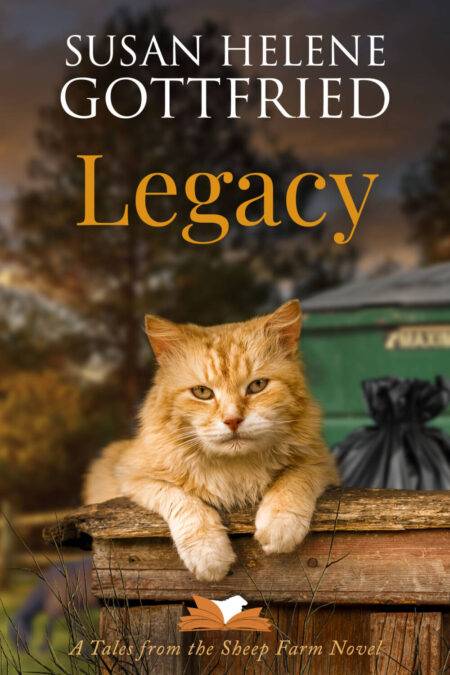“Complex and strange, The Quelling is a marvel of a debut. With an eye toward the Victorian madhouse and an American Gothicism reminiscent of Shirley Jackson, Barrow paints the sisters Dorian and Addie with tenderness and keen psychological intuition. Their voices, like the animal documentaries that play constantly in the background of their lives, remark frankly on the brutality of their experiences and yet capture an unfailing sense of wonder.” — Jen Julian, author of Earthly Delights and Other Apocalypses
About the author: Barbara Barrow’s short fiction has appeared or is forthcoming in Cimarron Review, Lost Balloon, Cease, Cows, Folio, and elsewhere. Her first novel, The Quelling, will be released on September 25, 2018 by Lanternfish Press. She’s Assistant Professor of English at Point Park University in Pittsburgh, and you can find her online at @dustyoldbagz and barbarabarrow.com.
From the Publisher: “Addie and Dorian have always been together: the two sisters have spent most of their lives in a locked ward after being diagnosed with a rare psychiatric condition and accused of murder as children. Now on the cusp of adulthood, Addie plans to start a new family to replace the one she lost, while Dorian struggles with her own violent tendencies to help raise her sister’s child. But Dr. Lark, the supervisor of their ward, sees these patients as the key to his revolutionary Cure. As his ‘treatments’ become increasingly bizarre, Addie and Dorian are increasingly unsafe, and a ward nurse may be their only lifeline.”
Don’t miss out: The launch party for The Quelling will be at Colony Cafe on October 5th!
“The Quelling — ferocious, tender, astonishing—lays bare our animalistic drives toward violence and love, and our human impulse to cure and to control. Barbara Barrow’s story of the sharp sisters Addie and Dorian, and the strange and transgressive Dr. Lark, brims with terrifying insights and the eerie intimacy of dreams.” — Anca L. Szilágyi, author of Daughters of the Air
Chapter 1:
Dorian, Addie
Dorian
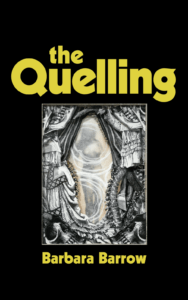 Some have jaws and fangs for the kill, and others have fast legs to escape. But every creature must chase or be chased. As children we were fascinated by these primal truths of the hunt: chimps screaming and pummeling their rivals, wolves piercing the necks of their prey. My sister and I gnawed each other in front of the television set. We sat alone in the house for days with the nature shows playing, and when the panthers came on, sleek and heaving, we dove and leapt at each other. At night, when the tree frogs came on, delicate and shining in the rain, we slept.
Some have jaws and fangs for the kill, and others have fast legs to escape. But every creature must chase or be chased. As children we were fascinated by these primal truths of the hunt: chimps screaming and pummeling their rivals, wolves piercing the necks of their prey. My sister and I gnawed each other in front of the television set. We sat alone in the house for days with the nature shows playing, and when the panthers came on, sleek and heaving, we dove and leapt at each other. At night, when the tree frogs came on, delicate and shining in the rain, we slept.
When they found the body they brought us to the police station and then to the private clinic outside Knoxville, where Dr. Lark and his nurses worked to make us harmless. They trimmed our nails, uncurled our fists, slid puffy black mittens on our hands, fitted helmets to our skulls. The same nature shows played and we still jumped at each other, thumping each other’s helmets, chopping each other in the chest so that all the wind was knocked out. When we became teenagers he began to put some distance between us.
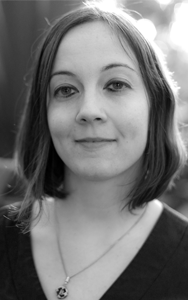 “Your bones won’t heal so quickly now,” he said. “You need to be apart.”
“Your bones won’t heal so quickly now,” he said. “You need to be apart.”
Every night for months I waited in perfect silence outside the bathroom, listening to Addie pee and wash her hands and shuffle toward the locked door that separated us. When she emerged I threw myself against her as hard as I could, knocking her down, my fists battering her neck and cheeks, my fingers yanking her hair.
“It’s a strange case, to be sure,” Dr. Lark tells us. We are legally adults now, but he says we are still too unstable to leave the ward. And he is our primary specialist and runs the clinic, so everyone listens. “From what I can tell, it seems like you both lack a vital sense of security. You’ve never learned to attach to your caregivers properly. I’m not sure how to say this, but it seems as if you have never been quelled.”
“Quelled?” Addie says. “Quelled? What does that mean?”
“Quelled,” Dr. Lark says, trilling the L’s. “It means you never learned that you are safe from attack. You strike first to protect yourselves. Some of this is about the murder. Some of this is about the abandonment. Some of this is about that early exposure to PBS Nature programming.”
When he says this, the ward fades and I am back in the old house in Nashville with Addie, the colors from the television splashing across our skin, lions and cheetahs bounding and pouncing across the screen while the grandfather clock chimes and the oscillating fan twists its neck slowly back and forth.
“Quelled,” Dr. Lark says again, almost to himself this time.
“What should we do?” my sister says. She is twenty, one year older than me, and delicately pretty apart from the misshapen jaw and nose that roll like waves in her face. “Does that mean we can’t have our own families? Does that mean I can’t have children?”
“I wouldn’t go that far,” Dr. Lark says. “It means you’ll always have trouble forming bonds and attachments. But I’ve been working on a new approach to the cure that I think will help you and Dorian.”
There will be many stages and sessions to this cure. “Think of it as a series of overlapping and repeating activities,” he explains, gesturing with his clipboard while running his free hand through his peppery gray hair. His lab coat is a starched white wall and the lenses in his wire-rimmed glasses gather and reflect the light from the lamp in his office so that I cannot see the color or the expression of his eyes. “These activities will teach you new habits of empathy. Through proximity and closeness, through shared activities, you will learn not to attack but to attach instead.”
At the first session we learn that we are to tend a tank of seahorses: this is supposed to show us the peace in nature. The delivery men set up the glass aquarium right in the center of the ward, next to the television in the common area, and Simon and Ellie fill it with algae-dusted rocks and red tree sponges and sea grass that sways and waves in the water. We are responsible for feeding the seahorses and cleaning their tank. The seahorses drift like dark hooks, like question marks. Like eardrums floating through the water. We watch them through the glass and our own reflections steal back to us softly. At night the tank is a beacon shining through the open door of our sleeping quarters.
During the sessions, we stand on opposite sides of the tank and watch the seahorses swim for half an hour or so while Dr. Lark and the nurses, Ellie and Simon, sit a few feet away with clipboards. Every few seconds we are supposed to narrate what is happening in the tank.
“You need to learn to work together, to see together,” Dr. Lark says. “Tell me what you see, Addie. Speak loudly, so Dorian can hear you.”
“I see two of them swimming,” Addie says.
“Good, Addie,” says Dr. Lark. “Now tell me something about the two of them, Dorian. The same two.”
“I see them swimming,” I say, “and dancing. They are swimming toward one another in the vines.”
“Good,” Dr. Lark says. “Now it’s your turn, Addie. Tell me what Dorian said and then tell me what else you see.”
Addie is silent. In the tank, two of the seahorses have broken off and are pursuing each other in a gliding, zigzagging pattern, up and down through the water.
“Tell me what Dorian said and then tell me what else you see,” Dr. Lark says again.
Addie glares in the tank light. “They swam toward each other in the vines,” she says stiffly. “Now they are mating together. The hen wants him to take the eggs.”
“Good, Addie,” Dr. Lark says, scribbling on his clipboard. Ellie leans over too and begins scribbling furiously. “Good. That’s it for today. That’s all.”
Twenty minutes it took her to be able to say that. I want to punch through the glass at her and hold the mating seahorses right up to her eyes.
The day after the first session at the seahorse tank, he tells us we need to start living in close proximity at all times. We are strictly forbidden to attack each other, and Simon, who is restraint-trained, follows us everywhere to make sure that we don’t. Over a series of several weeks I learn to spend every second within inches of my sister. Ellie moves our twin beds together and we read or watch TV while leaning on a shared pillow. If one of us goes to the bathroom, the other one comes in too and crouches next to the toilet and waits. We learn to share clementines and apples. We brush each other’s hair. We sleep, wake, eat, shit, and tend the seahorses right next to each other, and strands of her blonde hair constantly brush my arm. Her skin stirs something violent in me. I can feel how warm she is at night and how the warmth slides off her body like steam slipping from the flat surface of an iron. I want to strike her but my wrists are bound and Simon watches from a chair near the doorway, ready to pounce on me the second I move. These nights are the worst nights. I watch between my bound hands as she sleeps and I see the sweat beading and slipping near her temples and my fists ache and I want to bring them down on top of her skull. In the mornings her skin is slick and clammy and gives off a humid scent.
“The goal of the sessions is to get you to cooperate, to exist together,” Dr. Lark says in his office, sitting tall and straight, his muscular shoulders rounding out his white lab coat. Orbs of lamplight pool in his glasses. “If you two can do that, if you can begin to cooperate, then one day you will be able to remember and tell us what happened back in the house in Nashville. You will be able to know and speak about that memory. And that is the key to the cure.”
He pronounces the last word like it is a prayer, in a reverent whisper. The Cure: the final end of the sessions, the culminating avalanche of memory that will free us.
There is nothing about that house that I want to know.
Addie
She will never be quelled. They will always have to sedate her and bind her fists at night to make her be calm. In the morning as we eat our breakfast from trays in the common area I watch Simon give her some toast and a knife to butter it with. Patiently, over and over, Simon takes the blunt knife away and shows her how to scrape the yellow pat of margarine across the crunchy surface of the bread. Then Dorian tries it, placated only for the moment, for just as long as Simon sits by her with his wiry tattooed arms ready to restrain her. No, they will never quell her or get her to hold still. She will wear herself out with punching first.
In the first session at the seahorse tank I stand across from Dorian and look at her face looming in the glass. Her hair, jet-black and longer than mine, hangs loose around her shoulders. The thick bolts of her scowling eyebrows wrench the skin above her nose into furrows.
“You need to learn to work together, to see together,” Dr. Lark says. “Tell me what you see, Addie. Speak loudly, so Dorian can hear you.”
In the tank the male seahorse floats up to the female like a mad little dragon. He has a pouch in his front and is beginning his courtship dance with her, a ritual that might take days, their bodies circling each other in looping designs, their tails linking around the same shared blade of grass. When the male is ready he will pump water through his little pouch to make room for the eggs of the hen. The nature shows have taught me how they mate, with their horsey heads parallel, gradually synchronizing their bodies through the meandering dance while a voiceover announces that the males, not the females, keep the eggs.
“I see two of them swimming,” I say.
“Good, Addie,” says Dr. Lark. “Now tell me something about the two of them, Dorian. The same two.”
“I see them swimming,” she says, “and dancing. They are swimming toward one another in the vines.”
“Good,” Dr. Lark says. “Now it’s your turn, Addie. Tell me what Dorian said and tell me what else you see.”
I stare into the tank. The hen lingers in the vines, dances and hovers toward her mate, then twirls away airily, like a twig spinning on the current. To mate they will need to go down into the vines and the grass, where the male will puff out his pouch with the water. Then, when the hen’s eggs are ready, they will both let go and drift upward, their snouts close, the female piercing him with her long, thin ovipositor, swelling his body with her eggs. In there, somehow, in that dance down in the grass, is the answer to the question.
“Tell me what Dorian said and then tell me what else you see,” Dr. Lark says again.
“They swam toward each other in the vines,” I announce. “Now they are mating together. The hen wants him to take the eggs.”
“Good,” Dr. Lark says, scribbling. “That’s all for today.”
The Quelling is copyright © 2018 Barbara Barrow. This excerpt is published here courtesy of the author and the publisher, Lanternfish Press, and should not be reprinted without permission.


